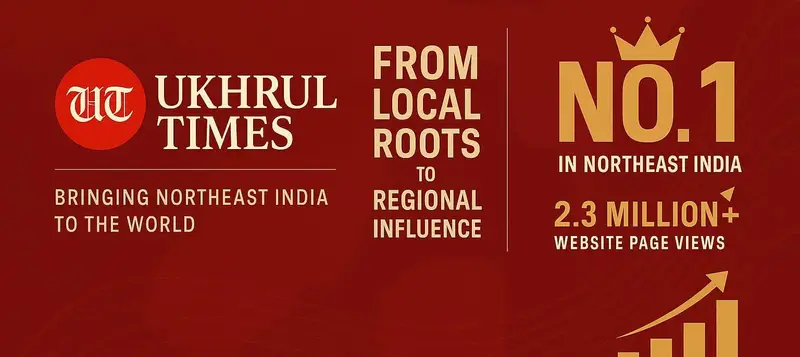Now Reading: Abolish the Institution of Hereditary Chieftainship to Facilitate Free Movement and Peace Talk
-
01
Abolish the Institution of Hereditary Chieftainship to Facilitate Free Movement and Peace Talk
Abolish the Institution of Hereditary Chieftainship to Facilitate Free Movement and Peace Talk

ON 1 March 2025, the Union Home Minister, Amit Shah, directed to ensure the free movement of people on all roads of Manipur from 08 March 2025. However, the Committee on Tribal Unity (CoTU), which is controlled by the hereditary Kuki Chiefs challenged the directives of the Union Government. Many Kuki women holding the National flags and violent protesters prevented the movement of the MST bus to Senapati at Kangpokpi. About 40 people including the security personnel were injured and one protester died.
The Government of India (GoI) has rejected the demand of the Kuki-Zo people for a “separate administration” in the form of a Union Territory (DH – 13 March 25). However, the Kukis are still refusing to engage in peace talks with the Meiteis and mulling the referendum. They continue to prevent the free movement of Meiteis in the Kuki-dominated areas. Most of those checking vehicles and preventing free movement on the roads are the ordinary vulnerable Kukis exploited by the hereditary Kuki Chiefs, militants, and vested interests.
The Internally Displaced People (IDPs) from both the communities, Meitei and Kukis, are keen to return to their respective original places and there has been no violent confrontation between the two communities since the imposition of Presidential Rule. However, the leaders of the Kuki-Zo Council, CoTU, and the Kuki Inpi Manipur are still against the free movement of Meitei in the Kuki-dominated areas without finding a political solution.
Most Kuki organizations are controlled by the hereditary Kuki Chiefs. The ordinary Kukis still do not own any land; they are poor and at the mercy of their Chief. They are highly vulnerable to exploitation by their Chiefs. The vulnerable Kuki groups are the source of workforce for the poppy growers and provide fertile ground for the recruitment of militants. This vulnerable Kuki group is a potent force available at the disposal of the hereditary Kuki Chiefs for deployment to obstruct free movement on the roads or in the protest demonstrations.
Some hereditary Kuki Chiefs, Kuki militants, and vested interests are determined to keep the Meitei and Kuki physically separated to pursue their objectives. They can deploy the ordinary Kukis living at the mercy of the autocratic hereditary Chiefs, stop the free movement of Meiteis in the Kuki-dominated areas, and prevent the Kukis from going to the Imphal Valley.
The Nagas and Kukis have a chieftainship system of village administration. The Chieftainship is not hereditary in the case of the Nagas and the Old Kuki tribes of Manipur. The Naga and the Old Kuki Chiefs do not claim ownership of the village land and forest. Their present role is mainly limited to ceremonial and religious activities. The advice of the village council and elders binds them.
The Chieftainship is hereditary in the case of New Kuki tribes who migrated from the Chin Hills of Burma (Myanmar) and Lushai Hills (Mizoram) to Manipur during and after the reign of Maharaja Nara Singh (1844 to 1850). The hereditary Kuki Chiefs have supreme authority and may exercise authority against the wishes of the village elders and the council.
The hereditary Kuki Chiefs claim the ownership of the village land, including the forest. The Kuki Chief’s word is the law within his chiefdom, and his decision is final. Villagers who disobey are severely punished or expelled. He can allot village land to outsiders, including foreigners, and make them settle in the village as long they please him.
The hereditary Kuki Chiefs have challenged the authority of the State Government to declare land in the hill district a ‘Reserve/protected Forest,’ and as per the Kuki tradition, the Kuki Chiefs are the owners of the land, including the forest. Therefore, one of the root causes of the present crisis stems from different perceptions of forest land ownership. There is a conflict of interest between the institution of hereditary Kuki Chiefs and the State Government.
The Kuki militants and vested interests have been spreading hatred and discontent for many years. The ordinary Kuki youths are misguided and misinformed to the extent that some of them emailed me in 2020 objecting to my article about the integrity of Manipur. They said “No state in India is named after a community. However, Manipur is named after the Meitei community.” The Kuki youths did not know the meaning of the Sanskrit word ‘Manipur’ which means “A jeweled land or the land of jewel.”
Some hereditary Kuki Chiefs, ethnocentric leaders, and people with vested interests have created fear psychosis among the ordinary Kukis by projecting the demand for the inclusion of Meitei in the Scheduled Tribes (ST) list as an attempt to grab the tribal land and the job quota. The vulnerable ordinary Kuki fear land alienation and are highly volatile, and incredibly hypersensitive to the policies of the State Government.
The hereditary Kuki Chief is also the Commander-in-Chief of the village Army and is responsible for dealing with the militants within his chiefdom. No local or foreign Kuki militants can operate from the land under his jurisdiction without his knowledge. Therefore, the violence that erupted in Churachandpur District on 23 May 2023 was impossible without the knowledge of the Kuki Chiefs.
In February 1948, the hereditary Chieftainship was abolished in the Chin Hills of Burma (Myanmar). Similarly, the Government of Assam passed the “Assam Lushai Hill District (Acquisition of Chief’s Rights) Act 1954,” and the institution of Hereditary Chieftainship was abolished in Lushai Hill District (now Mizoram). Compensation was paid to the affected Chiefs for ten years as per the number of households in the village. The cost of three tins of paddy per year per household for the first 100 households and two tins of paddy for the next 100 households were paid as compensation to the Chiefs.
Manipur is the only place left in the Northeast with the institution of Hereditary Chieftainship. The Legislative Assembly of Manipur passed the “Manipur (Hill Areas) Acquisition of Chief’s Rights Act 1967” to abolish the institution of hereditary Chieftainship on 10 January 1967. The Act received the assent of the President of India on 14 June 1967. However, the Act could not be implemented mainly due to objections from the politically powerful lobby of Kuki Chiefs. The politicians in power have conveniently forgotten the above Act till the outbreak of the present crisis.
The concept of rulership, with ‘privy purse’ and special privileges is incompatible with the principles of democracy, equality, and social justice and it was abolished by the 26th Amendment to the Constitution of India in 1971. Now, only the hereditary Kuki Chiefs in Manipur have the monopoly of supreme authority of military, executive, legislative, and legal power. Therefore, the Kuki Chiefs have acted aggressively with impunity towards the other ethnic groups living in the State.
If the “Manipur (Hill Areas) Acquisition of Chief’s Rights Act 1967” was implemented in time, it is most unlikely that the Naga-Kuki conflict 1992-94, the Paite-Kuki clashes 1997-98, and the present crisis would have ever happened. If the Act is implemented, the ordinary Kuki can own land, they don’t have to depend on the mercy of the hereditary Chief and enjoy the freedom provided by the Constitution of India. Further, they can’t be exploited and deployed by the vested interest to obstruct free movement or any other violent activities.
The unique supreme authority of hereditary Kuki Chiefs can be abolished by implementing the “Manipur (Hill Areas) Acquisition of Chief’s Rights Act 1967.” It will pave the way for free movement and fruitful peace talks between the Meiteis and the Kukis.
The compensation to be paid to each hereditary Kuki Chief can be worked out based on the method used for calculation in the then Lushai Hill District of Assam (Mizoram). The land in the Kuki villages can be temporarily kept under the management of the respective Village Council till the survey and distribution of the same to the ordinary Kukis.
As per Article 371C, the executive power of the Union shall extend to the giving of directions to the State as to the administration of the said areas (Hill Areas). Further, the State is under the President’s Rule. Therefore, the Governor of Manipur has the authority to implement the above Act.
Also read | Why Kukis Cannot Claim Chandel As Part of “Kukiland”: The Lamkang Example
The delay in the implementation of the “Manipur (Hill Areas) Acquisition of Chief’s Rights Act 1967” is one of the root causes of the present crisis. The Governor of Manipur should therefore implement the “Manipur (Hill Areas) Acquisition of Chief’s Rights Act 1967,” and formally abolish the institution of hereditary Chieftainship in Manipur. It will prevent the exploitation of the ordinary Kuki in the present crisis, enable the free movement of people, and expedite the return of peace. Further, the ordinary Kuki can own land and enjoy the freedom granted by the Constitution of India.
The writer is a retired Captain of the Indian Navy.
(This is not a Ukhrul Times publication. UT is not responsible for, nor does it necessarily endorse, its content. Any reports or views expressed are solely those of the author or publisher and do not necessarily reflect those of Ukhrul Times.)
















